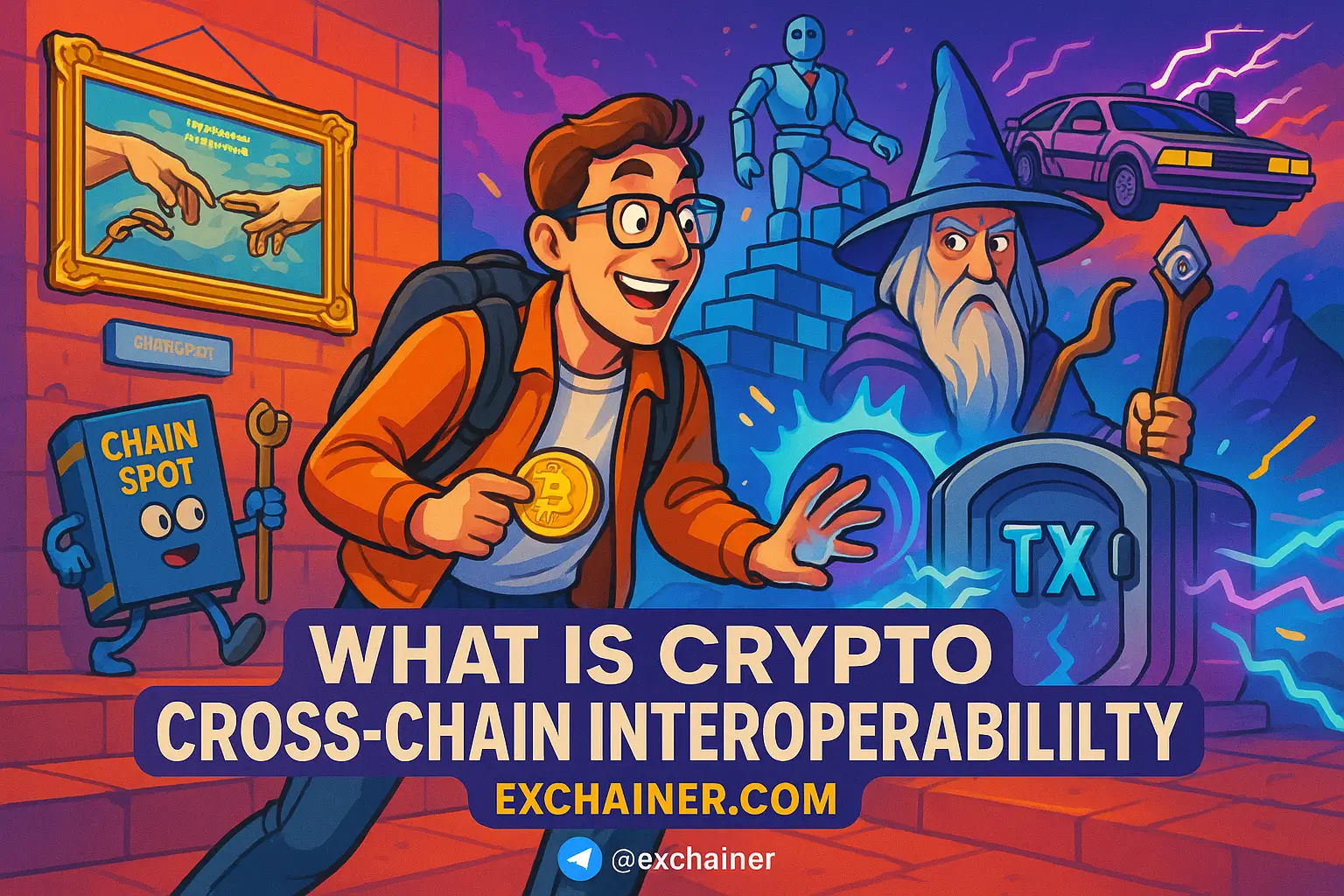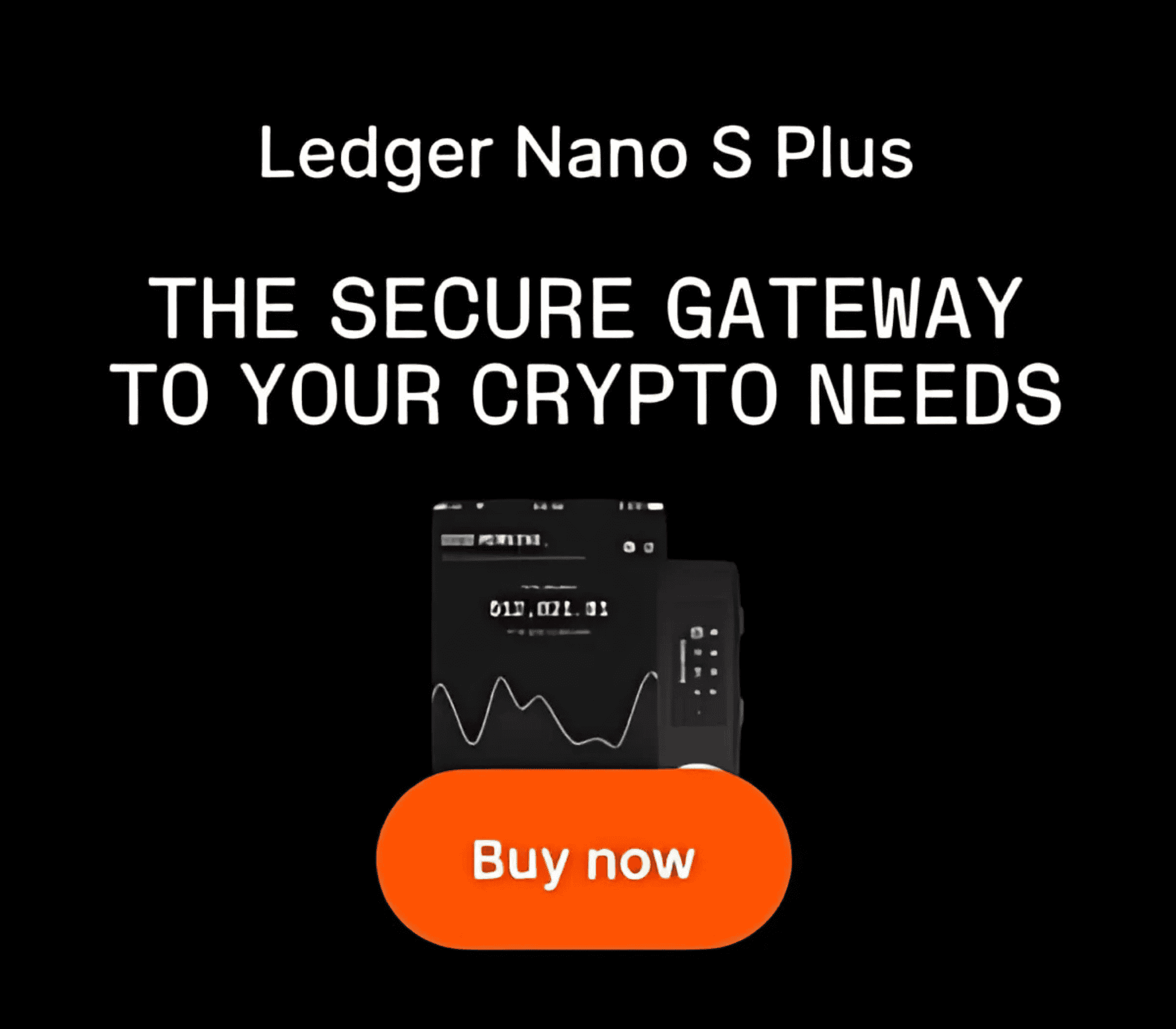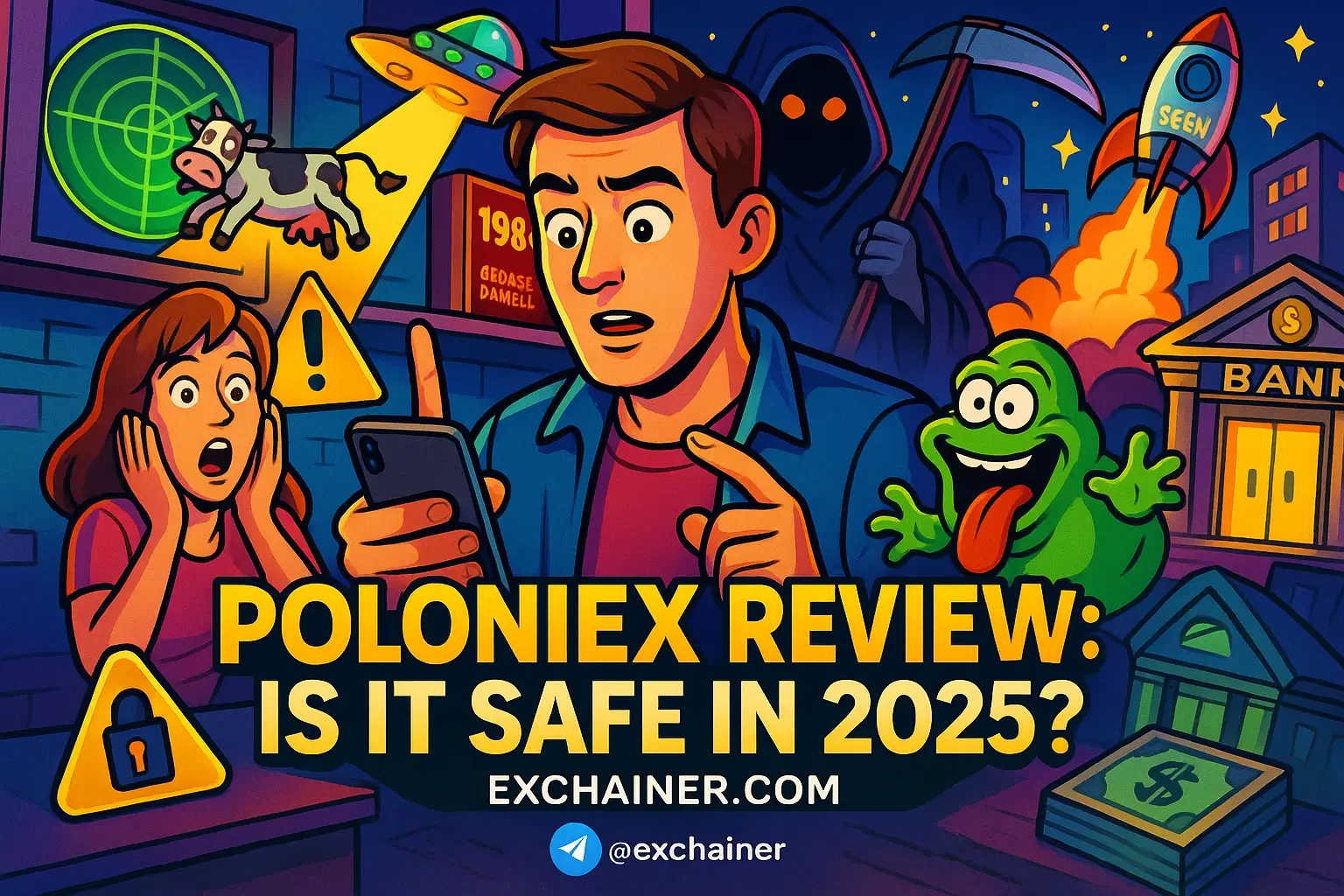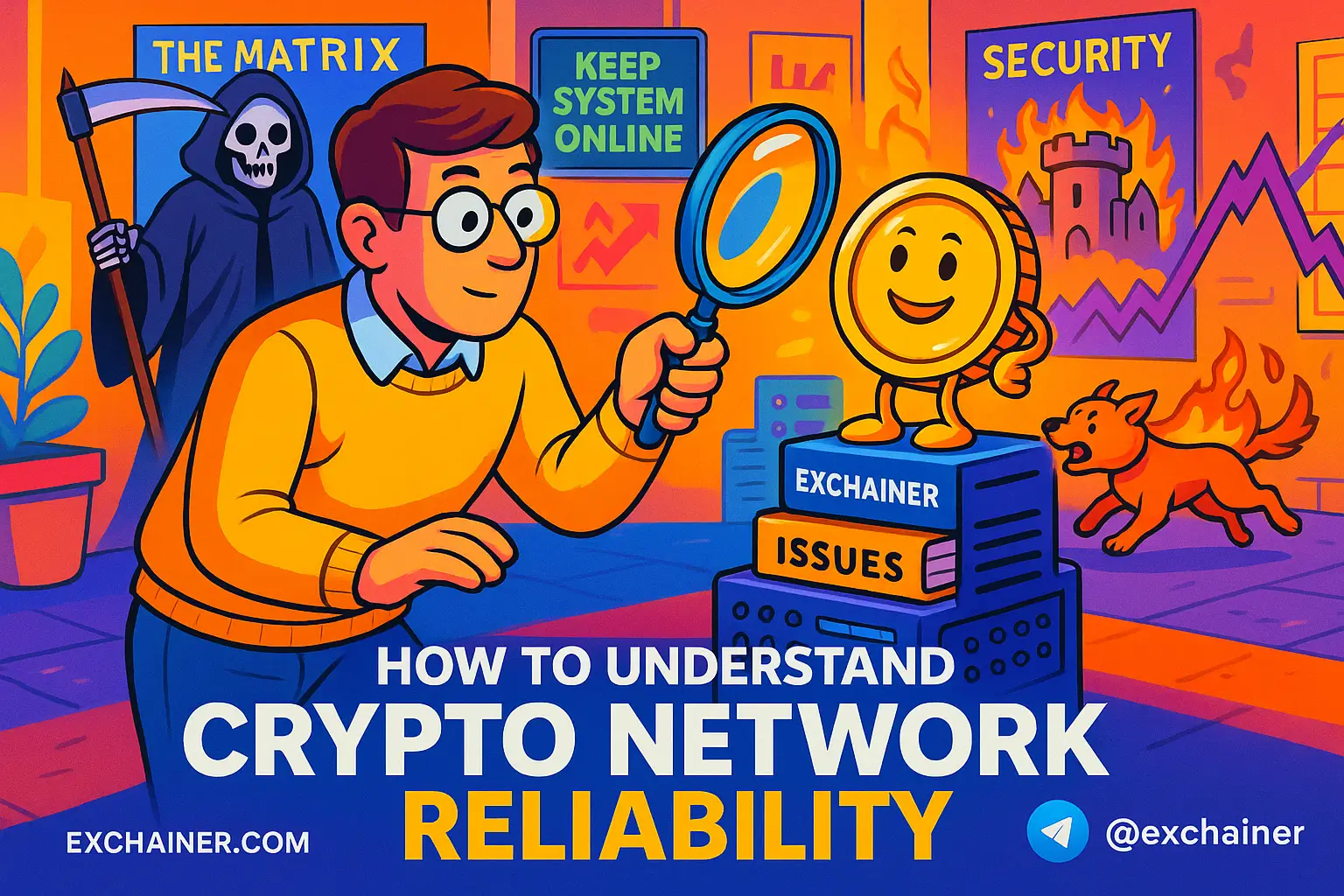Introduction
Imagine being able to use your Bitcoin (BTC) directly inside an Ethereum-based decentralized finance (DeFi) app, leveraging it as collateral or earning interest, without having to sell or convert it first. Sounds like magic, right? Well, that’s precisely the promise that the world of crypto cross-chain interoperability aims to fulfill. As the cryptocurrency landscape becomes increasingly diverse, with dozens of blockchains offering unique features and user bases, the ability to seamlessly move assets, data, or even smart contracts between these chains has become a game-changer.
Crypto cross-chain interoperability refers to the capacity of different blockchain networks to communicate, exchange data, and transfer tokens between each other effortlessly. This technology is vital today because of the growing number of projects and ecosystems that operate independently but want to interact fluidly. Without interoperability, blockchains become isolated islands—limiting liquidity, user experience, and innovation across the crypto space.
In this detailed guide, we will explore the ins and outs of crypto cross-chain interoperability, explaining key methods like cross-chain bridges and atomic swaps, diving into popular interoperability protocols, and shining a light on the security risks and best practices. Whether you’re a developer building decentralized applications, an investor seeking diversified exposure, or a curious DeFi user eager to understand how your tokens can travel between blockchains, this article has you covered. Expect practical examples, technical insights, and actionable advice to help you navigate and benefit from interoperability. Along the way, we’ll also highlight key terms like cross-chain bridges, interoperability protocols, and atomic swaps—breaking them down so they’re easy to grasp even if you’re just starting out in crypto.
Cross-Chain Bridges — How They Work
Cross-chain bridges are the backbone of crypto cross-chain interoperability. These specialized mechanisms allow tokens or data to move from one blockchain to another, essentially enabling communication across different networks. But not all bridges are built the same, and understanding their types and how they operate is key to using them wisely.
Bridge Types and Trust Models
There are two main categories of cross-chain bridges: custodial (centralized) and trustless (decentralized). Custodial bridges rely on a centralized entity or smart contract that holds the original tokens on the source chain and issues equivalent assets on the destination chain. This is simpler but requires users to trust a third party not to abscond with their funds.
Trustless bridges, on the other hand, work through decentralized protocols that validate transactions and token movements without a single point of failure. Examples include multi-signature schemes and consensus-driven validators. These models often mint wrapped tokens—digital assets pegged 1:1 to the locked tokens. For instance, if you lock 1 BTC on Bitcoin’s blockchain, the bridge mints 1 wrapped BTC (WBTC) on Ethereum, which you can freely use like any Ethereum-based token.
Pros and Cons: Custodial bridges tend to be faster and cheaper but come with increased risk since control rests with one party. Trustless bridges are more secure in theory but can be slower and complex to operate due to decentralized validation processes. The trade-off between speed, decentralization, and trustworthiness is something every user or developer should weigh carefully.
Technical Mechanics: Locking, Minting, Relayers, and Validators
Let’s break down an example typical bridge operation:
- You send 10 ETH to a smart contract (lock) on the Ethereum network.
- The bridge's relayers or validators observe this transaction and confirm the lock event.
- On the destination blockchain (say Polygon), an equivalent number of wrapped ETH tokens are minted and assigned to your wallet.
- When you want your original ETH back, you can burn the wrapped ETH on Polygon.
- The bridge then releases the locked ETH on Ethereum back to your wallet.
The “relayers” or “validators” are off-chain agents or nodes tasked with monitoring transactions and making sure the bridge state is synced between chains. Some bridges use oracles or light client protocols to confirm events securely, while others rely on trusted multi-signature authorities. The exact approach impacts decentralization and security.
Real-World Examples and Use Cases
Popular cross-chain bridges like the Polygon Bridge, Wormhole, and Hop Protocol have become essential tools allowing users to move tokens seamlessly to take advantage of cheaper fees, faster transaction speeds, or exclusive DeFi opportunities. For instance, NFT creators might mint tokens on Ethereum but sell them in a marketplace on a sidechain with lower fees, enabled by bridges. Meanwhile, liquidity providers often migrate funds across chains to maximize yields amid fluctuating market conditions.
Atomic Swaps & HTLCs — Trustless Token Exchange
Atomic swaps represent a fascinating innovation that ties closely to the ideals behind crypto cross-chain interoperability. Unlike bridges, which usually involve wrapping and custodianship, atomic swaps enable direct, trustless exchanges of tokens between two users across different blockchains.
What Are Atomic Swaps and HTLCs?
An atomic swap is essentially a peer-to-peer, all-or-nothing trade of cryptocurrencies between two distinct blockchains, without needing intermediaries. This is made possible by a cryptographic technique called a Hash Time-Locked Contract (HTLC). HTLCs impose two conditions on the trade: one party must reveal a secret hash within a predefined time, or the contract will automatically reverse the transaction. This ensures that neither side can cheat by running off with the other’s coins.
For example, Alice wants to swap her Bitcoin for Bob’s Litecoin. Both initiate HTLCs on their respective chains using the secret hash. Once Alice claims Bob’s Litecoin by revealing the secret, Bob can use that same secret to redeem Alice’s Bitcoin on the Bitcoin blockchain, making the exchange smooth and secure.
On-Chain vs Off-Chain Implementations and UX Challenges
HTLC-based atomic swaps happen on-chain, meaning that all swap operations are recorded on both blockchains. This provides high security but can be slow and expensive due to transaction fees and block confirmation times.
Off-chain implementations, such as lightning network swaps, occur on payment channels and provide faster, cheaper swaps, but often work best within specific scaling solutions.
Despite their elegance, atomic swaps face hurdles in user experience. Setting up swaps requires technical knowledge and coordination between parties, limiting mainstream adoption. Liquidity can also be a challenge because swaps depend on matching users with complementary trade intents.
Limitations, Adoption Barriers, and Real Examples
Atomic swaps are excellent for direct token-to-token trades but are less suited for complex DeFi interactions involving smart contract composability or liquidity pool migrations. Projects like Komodo have implemented atomic swap solutions, but they remain niche compared to bridges.
In practice, atomic swaps serve well as a trustless alternative in decentralized exchanges (DEXs) and peer-to-peer trading but are often complemented by other interoperability tools for broader use cases.
Interoperability Protocols & Standards
While bridges and swaps are important, interoperability at a protocol level is revolutionizing cross-chain communication by providing standardized ways for blockchains to connect natively and securely.
Protocol Families: Hub-and-Spoke vs Message-Passing Networks
Two major interoperability design paradigms dominate the space:
-
Hub-and-Spoke Model: Inspired by a central relay or hub coordinating communication with multiple sidechains or parachains. Polkadot exemplifies this, with its Relay Chain ensuring security and messaging between parachains, which are independent blockchains optimized for specific functions.
-
Message-Passing Networks: Focus on direct blockchain-to-blockchain communication without centralized hubs. Cosmos uses the Inter-Blockchain Communication Protocol (IBC), enabling chains to send messages and assets peer-to-peer in a decentralized manner.
Both models have their merits: hub-and-spoke offers shared security and governance but risks hub centralization, while message-passing fosters independent chain sovereignty and flexibility but demands more inter-chain coordination.
Key Standards and Technologies (IBC, CCIP, Interledger)
IBC is a flagship interoperability protocol that standardizes cross-chain packet formats and acknowledgment mechanisms. It allows fast, secure transfer of tokens and arbitrary data. You can learn more about IBC at the official Cosmos site.
Chainlink’s Cross-Chain Interoperability Protocol (CCIP) is another promising approach designed for general-purpose smart contract calls between chains, extending beyond simple token transfers.
The Interledger Protocol focuses on connecting payment systems, allowing value transfer across ledgers, including blockchains.
These standards push the industry toward a more scalable, composable, and user-friendly cross-chain experience, paving the way for next-gen decentralized applications.
Developer Considerations and Composability
From a developer’s perspective, choosing the right interoperability protocol depends on the desired dApp architecture. Hub models simplify security management but might limit chain-specific customizations. Message-passing offers flexibility but requires robust error-handling and synchronization logic.
Cross-chain composability—the ability of smart contracts on different chains to call or depend on each other—is one of the holy grails unlocked by these protocols. It allows building multi-chain DeFi platforms combining the strengths of diverse blockchains.
Security, Risks, and Best Practices
Cross-chain interoperability, especially using bridges, is not without significant security challenges. The history of crypto is dotted with high-profile exploits resulting in hundreds of millions lost—a sobering reminder to proceed carefully.
Common Attack Vectors and Past Incident Lessons
Bridge exploits often arise from vulnerabilities like faulty smart contracts, oracle manipulation, or compromised private keys controlling validator nodes. For example, the Wormhole bridge lost approximately $320 million in a 2022 hack due to a compromised private key used by a trusted guardian.
Oracle manipulation attacks target the data feeds that confirm token lock/mint events across chains. If an attacker forges this data, they can trick a bridge into minting fraudulent tokens.
Understanding these risks is crucial for users and developers alike.
Risk Mitigation Strategies and Audits
Best practices to enhance cross-chain security include deploying multiple layers of validation such as multi-signature wallets or decentralized validators, conducting formal verification of smart contracts, and maintaining continuous security audits. Many projects also run bug bounty programs inviting community testers to hunt for flaws.
Some bridges have started offering insurance policies or partnering with crypto insurance firms to compensate users affected by hacks, boosting overall trust.
Regulatory, UX, and Liquidity Considerations
From a regulatory standpoint, cross-chain bridges may come under increased scrutiny, especially in jurisdictions concerned with anti-money laundering (AML) and know-your-customer (KYC) requirements. Teams must balance privacy and compliance to avoid legal pitfalls.
User experience should prioritize clear warnings about bridge risks, encourage small test transfers, and provide transparent information about smart contract audits.
Liquidity fragmentation is another challenge; as assets spread across multiple chains, finding sufficient liquidity for swaps and trades becomes harder. Designing cross-chain flows that focus on liquidity aggregation and user education helps mitigate this issue.
Conclusion
In a world where blockchain ecosystems multiply, crypto cross-chain interoperability serves as the vital bridge—literally and figuratively—connecting fragmented chains into a unified digital economy. As we learned, the landscape includes cross-chain bridges facilitating asset transfers via locking and minting, atomic swaps enabling trustless token exchanges through HTLCs, and sophisticated interoperability protocols like Cosmos’ IBC and Polkadot’s Relay Chain powering secure, scalable communication between blockchains.
Each approach has strengths and trade-offs. Bridges offer ease of use but require trust trade-offs and security vigilance. Atomic swaps provide trustless exchanges but face usability challenges and limited application scope. Interoperability protocols promise a future of seamless, composable multi-chain dApps but demand advanced development expertise and ecosystem collaboration. Awareness of cross-chain security challenges is paramount—a lesson underscored by major hacks and ongoing regulatory developments.
For users venturing into cross-chain transfers, start by using reputable, audited bridges, perform small test transactions first, and stay informed on emerging risks. Developers should carefully select protocols that align with their application’s composability and upgrade needs, while relentlessly prioritizing security audits. Investors and decision-makers must evaluate projects’ security postures and adoption metrics before dipping in.
Looking ahead, the crypto space is moving toward greater standardization, native cross-chain primitives baked into new chains, and enhanced user experiences that make moving assets feel as natural as sending an email. As Vitalik Buterin, co-founder of Ethereum, once said, “The future of money is in interoperability.” So friends, whether you’re building, investing, or simply curious, understanding cross-chain interoperability is now your edge to thriving in this exciting multi-chain era.
Ready to dive deeper? Explore more beginner and advanced guides on Crypto 101. Need trustworthy exchange insights? Check out our Exchange Reviews. And don’t miss handy tools to safeguard your assets at Tools and Wallets. Your crypto journey just got a whole lot smoother!
For further reading on trusted project and protocol developments, visit CoinMarketCap’s glossary on Cross-chain bridges and check Cosmos Network’s documentation on IBC protocol.












